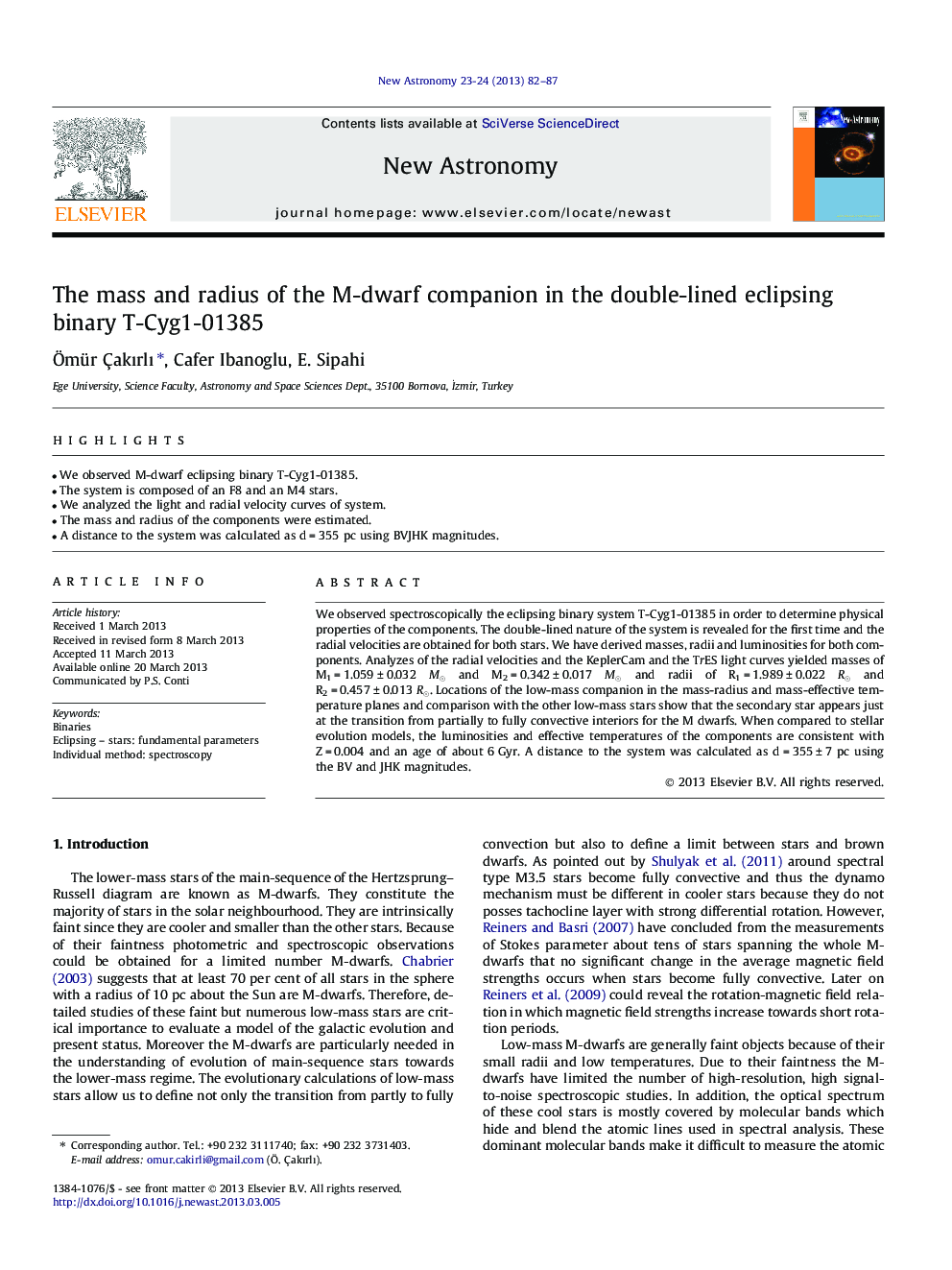| Article ID | Journal | Published Year | Pages | File Type |
|---|---|---|---|---|
| 1779083 | New Astronomy | 2013 | 6 Pages |
•We observed M-dwarf eclipsing binary T-Cyg1-01385.•The system is composed of an F8 and an M4 stars.•We analyzed the light and radial velocity curves of system.•The mass and radius of the components were estimated.•A distance to the system was calculated as d = 355 pc using BVJHK magnitudes.
We observed spectroscopically the eclipsing binary system T-Cyg1-01385 in order to determine physical properties of the components. The double-lined nature of the system is revealed for the first time and the radial velocities are obtained for both stars. We have derived masses, radii and luminosities for both components. Analyzes of the radial velocities and the KeplerCam and the TrES light curves yielded masses of M1 = 1.059 ± 0.032 M⊙M⊙ and M2 = 0.342 ± 0.017 M⊙M⊙ and radii of R1 = 1.989 ± 0.022 R⊙R⊙ and R2 = 0.457 ± 0.013 R⊙R⊙. Locations of the low-mass companion in the mass-radius and mass-effective temperature planes and comparison with the other low-mass stars show that the secondary star appears just at the transition from partially to fully convective interiors for the M dwarfs. When compared to stellar evolution models, the luminosities and effective temperatures of the components are consistent with Z = 0.004 and an age of about 6 Gyr. A distance to the system was calculated as d = 355 ± 7 pc using the BV and JHK magnitudes.
